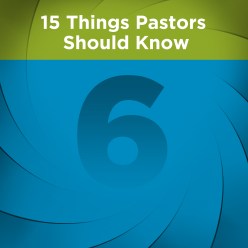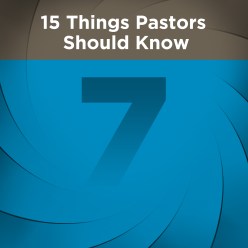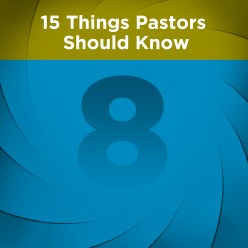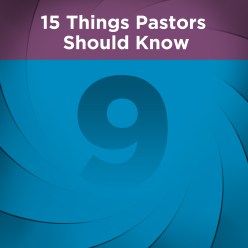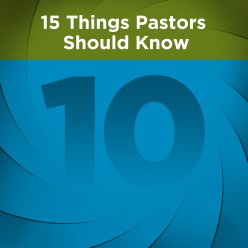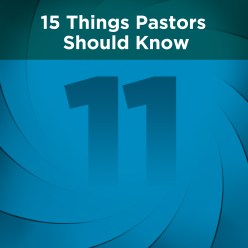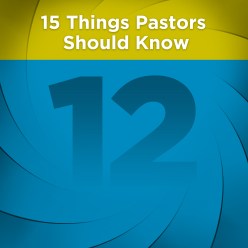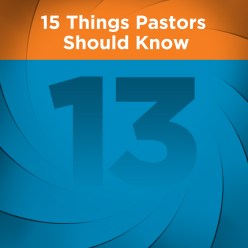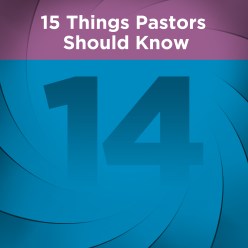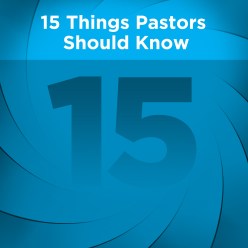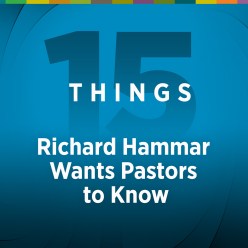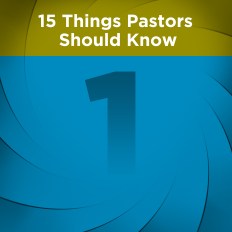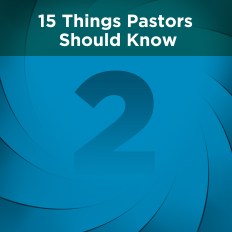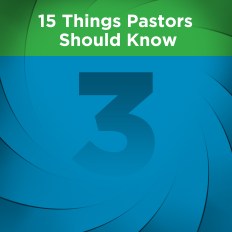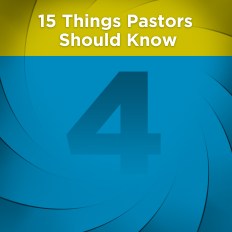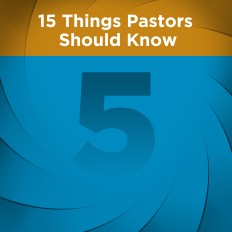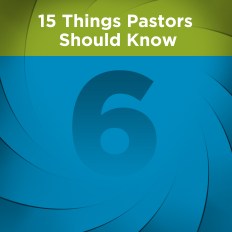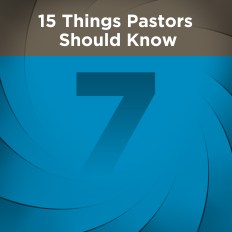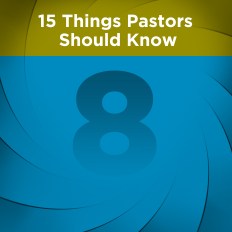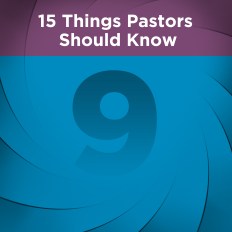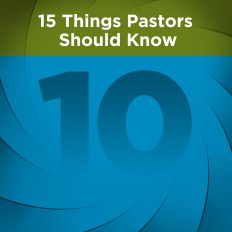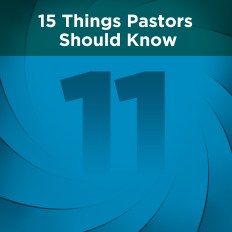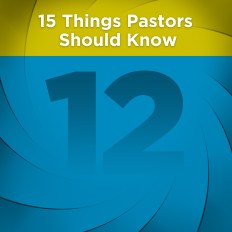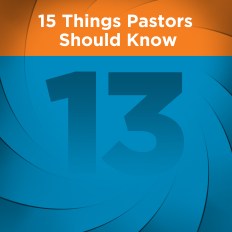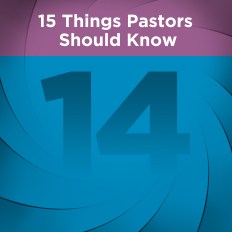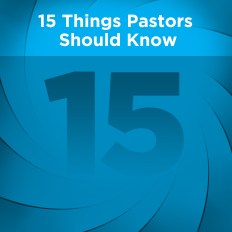Article Last Reviewed: July 12, 2023
A place of public accommodation is broadly defined as a place that offers the public some sort of goods and/or services.
Most states and many cities have enacted laws prohibiting various forms of discrimination by places of public accommodation.
According to the National Conference of State Legislators, “18 jurisdictions prohibit discrimination based on marital status, 25 prohibit discrimination based on sexual orientation, [and] 24 prohibit discrimination based on gender identity.”
Some state laws exempt religious organizations, but others contain no explicit exemption.
This raises questions for some churches and pastors.
Can churches or clergy be penalized under a state or local public accommodations law for sermons and other teachings that reject, on doctrinal grounds, same-sex marriages or gender identity different from one’s gender at birth?
Several decisions of the United States Supreme Court strongly suggest that the First Amendment guaranty of religious freedom permits clergy to perform or not perform marriages consistent with their religious beliefs.
One example includes a unanimous 2012 decision recognizing a church’s right to hire and fire ministers for any reason (the “ministerial exception”), including for matters related to doctrine and theology. Hosanna-Tabor Evangelical Lutheran Church and School v. EEOC, 565 U. S. 171 (2012). The ministerial exception, which is rooted in the First Amendment’s religion clauses, prevents the civil courts from resolving employment discrimination disputes between churches and clergy.
This will protect the decisions of churches and religious denominations regarding the selection, ordination, and discipline of clergy on the basis of sexual orientation or any other condition or status. And it supports the exclusive autonomy of churches to resolve issues of discipline and doctrine which, at least indirectly, protects decisions by clergy regarding who they will, or will not, marry.
Another example is 303 Creative v. Elenis (600 U.S. ____ (2023), a 6-3 decision that recognizes speech-related protections afforded to businesses under the First Amendment. The case demonstrates the constitutional defenses potentially available if a court or state agency sanctions a business, church, or minister under a public accommodations law for activities deemed to be speech. In 303 Creative, the Court’s majority found Colorado used its public accommodations law in a manner that compelled a business owner to create speech she disagreed with based on her religious beliefs.
The Court noted: “(N)o public accommodations law is immune from the demands of the Constitution . . . and when a state public accommodations law and the Constitution collide, there can be no question which must prevail.”
Lastly, it is also worth noting that, in the country’s nearly 250-year history, no minister has ever been sued, much less found liable, for refusing to perform a wedding for other reasons, such as ones resulting in bigamy, polygamy, or incest, or ones in which one or both spouses were previously married and divorced. A minister’s refusal to marry a same-sex couple in contravention of his or her religious beliefs should be viewed in the same light.
Is the church a “place of public accommodation” under applicable local, state, or federal laws, and thus subject to penalties for violating them?
There are three possibilities for answering this question:
- The law excludes churches from the definition of a “place of public accommodation.”
- Churches are excluded from the definition of a “place of public accommodation” but only if certain conditions are met. For example, a church does not rent its property to the public for weddings and other events.
- Churches are included in the definition of a place of public accommodation even if they do not rent their property to the public or engage in any other commercial activity. To illustrate, four churches challenged a 2016 Massachusetts law that was construed by the state attorney general to include “houses of worship” within the definition of a place of public accommodation regardless of rental or other commercial activity. The state attorney general later announced that “while religious facilities may qualify as places of public accommodation if they host a public, secular function, an unqualified reference to ‘houses of worship’” was inappropriate.
Whether churches are deemed to be places of public accommodation under state or local law will depend on the language of the applicable public accommodations law. What follows are summaries of most of the court cases, listed in chronological order, which have addressed this question. Note that quotations without attributions are statements made by the court.
Traggis v. St. Barbara’s Greek Orthodox Church, 851 F.2d 584 (2d Cir. 1988)
A church had not violated a Connecticut law banning several kinds of discrimination in places of public accommodation because a church is not a place of public accommodation.
Roman Catholic Archdiocese v. Commonwealth of Pennsylvania, 548 A.2d 328 (Penn. 1988)
Parochial schools run by a Catholic church are not places of public accommodation under Pennsylvania law.
Presbytery of New Jersey v. Florio, 40 F.3d 1454 (3rd Cir. 1994) aff’d 99 F.3d 101 (1996)
In dismissing a church’s request for an injunction barring the state from applying against churches a public accommodations law banning discrimination based on sexual orientation, the court relied in part on the following assurance provided by a state civil rights agency:
It has been the consistent construction and interpretation of the [law] that, consonant with constitutional legal barriers respecting legitimate belief and free exercise protected by the First Amendment, the state was not authorized to regulate or control religious worship, beliefs, governance, practice or liturgical norms, even where ostensibly at odds with any of the law’s prohibited categories of discrimination.
Wazeerud–Din v. Goodwill Home & Missions, Inc., 737 A.2d 683 (1999)
A church’s addiction program was not a place of public accommodation under New Jersey law; the group was essentially religious in nature in that it devoted time to the study of Christian tenets and “a religious institution’s solicitation of participation in its religious activities is generally limited to persons who are adherents of the faith or at least receptive to its beliefs.”
Donaldson v. Farrakhan, 762 N.E.2d 835 (Mass. 2002)
The Massachusetts Supreme Judicial Court considered whether a public accommodation law applied to a religiously affiliated event that was not open to women. The event in question was a speaking event promoted, organized, and funded by a mosque, and presented by minister Louis Farrakhan at a city-owned theater, to address drugs, crime, and violence in the community. The court found that the event was not a “public, secular function” of the mosque.
The court also found that application of the public accommodation law to require the admission of women to the event “would be in direct contravention of the religious practice of the mosque” because it would impair the “expression of religious viewpoints” of the mosque with respect to the “separation of the sexes” and the role of men in the community. The court thus further held that the “forced inclusion of women in the mosque’s religious men’s meeting by application of the public accommodation statute” would “significantly burden” the mosque’s First Amendment rights of expression and association.
Sailant v. City of Greenwood, 2003 WL 24032987 (S.D. Ind. 2003)
“The church is not a place of public accommodation.”
Vargas–Santana v. Boy Scouts of America, 2007 WL 995002 (D.P.R. 2007)
“As a matter of law, a church is not a place of public accommodation.”
Abington Friends School, 207 WL 1489498 (E.D. Pa. 2007)
This case involved the interpretation of the exemption of religious organizations from the public accommodations discrimination provisions in the Americans with Disabilities Act (ADA). The court quoted from the ADA regulations:
Although a religious organization or a religious entity that is controlled by a religious organization has no obligations under the rule, a public accommodation that is not itself a religious organization, but that operates a place of public accommodation in leased space on the property of a religious entity, which is not a place of worship, is subject to the rule’s requirements if it is not under control of a religious organization. When a church rents meeting space, which is not a place of worship, to a local community group or to a private, independent day care center, the ADA applies to the activities of the local community group and day care center if a lease exists and consideration is paid. 28 C.F.R. Pt. 36, App. B (2007).
Sloan v. Community Christian School, 2015 WL 10437824 (M.D. Tenn. 2015)
This case addressed the definition of “a place of public accommodation” under Title III of the ADA rather than a state or local public accommodations law. Nevertheless, its discussion of this key term provides some clarification, even if by inference. It suggests that churches that operate “a day care center, a nursing home, a private school, or a diocesan school system,” may be places of public accommodation subject to the nondiscrimination provisions of a local or state public accommodations law.
Barker v. Our Lady of Mount Carmel School, 2016 WL 4571388 (D.N.J. 2016)
“Although churches, seminaries and religious programs are not expressly excluded from the definition of ‘place of public accommodation,’ the legislature clearly did not intend to subject such facilities and activities to the [public accommodations law]. Thus, the claims against these institutional defendants fail as a matter of law.”
Fort Des Moines Church v. Jackson, 2016 WL 6089642 (S.D. Iowa 2016)
A federal district court in Iowa refused to issue an injunction preventing state and local public accommodation laws from being enforced against a church, since there was no injury to be redressed. The court referenced an exception in the law for churches, and an affidavit from the state and city defendants that they had never applied the law to churches. But the court cautioned that a church that “engages in non-religious activities which are open to the public” would not be exempt, and it cited for example “an independent day care or polling place located on the premises of the place of worship.”
Hitching Post Weddings v. City of Coeur d’Alene, 172 F.Supp.3d 1118 (D. Idaho 2016)
A federal district court in Idaho ruled that the ordained ministers who ran a wedding chapel lacked “standing” to challenge the constitutionality of a municipal public accommodations law that they believed violated their constitutional rights of speech and the free exercise of religion because of their apprehension that they would be punished for refusing to perform same-sex marriages.
The court concluded that the religious organization lacked standing to litigate its claims since its concerns over future punishment for violating the ordinance was not a sufficient injury to satisfy the standing requirement. The court noted that no religious organization had ever been prosecuted for violating the ordinance, and that the city attorney had informed the wedding chapel that it would not be prosecuted.
Fulton v. City of Philadelphia, 141 S. Ct. 1868 (2021)
The US Supreme Court ruled that a church foster care agency was not a place of public accommodation. This meant the agency was not subject to the nondiscrimination provisions of the Pennsylvania public accommodations law banning discrimination based on sexual orientation or gender identity.
303 Creative LLC v. Elenis, 600 U.S. ___ (2023)
The US Supreme Court ruled that “no public accommodations law is immune from the demands of the Constitution . . . and when a state public accommodations law and the Constitution collide, there can be no question which must prevail.”
What forms of discrimination are prohibited by places of public accommodation?
The forms of discrimination forbidden by public accommodations laws vary from jurisdiction to jurisdiction. And they are often amended, so it is important for church leaders to be familiar with the current text of applicable public accommodation laws.
Can a church ever assert the First Amendment’s religion and/or speech clauses as defenses against penalties enforced against it through a state or local public accommodation law?
Yes. Several courts and administrative agencies have said that there are constitutional limits on the authority of government agencies to enforce the nondiscrimination provisions of public accommodation laws against churches. Heading the list is the US Supreme Court’s ruling in 303 Creative.
To illustrate, a federal district court in Iowa ruled that a church’s fear of being sued for violating a public accommodations law as a result of sermons on biblical sexual morality was too fanciful to give the church “standing” to pursue its claim in federal court. The court considered the church’s conduct to fall outside of the state statute. Fort Des Moines Church v. Jackson.
The court concluded:
Plaintiff alleges that it fears prosecution under the state and municipal discrimination bans if . . . its pastor delivers his sermon about biological sex and the Bible. However [this fear] is not objectively reasonable. All of the statutes, the ordinances, and the interpretations of the provisions appearing in the [state civil rights agency’s] guidance documents include an exemption for religious institutions when conducting religious activities. Although the definitive scope of this exemption is yet to be determined, the court concludes the delivery of a sermon by a pastor of a church is undoubtedly an act intended to serve “a bona fide religious purpose.” Indeed, it is a quintessential religious activity. See Fowler v. State of R.I., 345 U.S. 67 (1953) . . . [in which the Supreme Court ruled] that it is not within “the competence of courts under our constitutional scheme to approve, disapprove, classify, regulate, or in any manner control sermons delivered at religious meetings,” and “sermons are as much a part of a religious service as prayers.” Hence, plaintiff’s allegedly chilled course of conduct is not even arguably proscribed by the statute. Rather, it is expressly permitted. Accordingly, plaintiff’s fear of enforcement consequences if it delivers the sermon is not objectively reasonable because it does not face a credible threat of prosecution on that basis. . . . A plaintiff cannot show a threat of prosecution under a statute if it clearly fails to cover his conduct.
Similarly, in Presbytery of New Jersey v. Florio, a federal district court in New Jersey ruled that the New Jersey Law Against Discrimination (NJLAD), which prohibits discrimination on various grounds including gender identity and sexual orientation in any “place of public accommodation,” did not apply to a church. The court relied on an affidavit submitted by the director of the state division of civil rights (the “Stewart affidavit”) setting forth the position of the division and state attorney general regarding enforcement of the nondiscrimination provisions in the state public accommodations law against religious institutions. The Stewart affidavit affirmed that the state did not consider churches places of “public accommodations,” and so the sections relating to public accommodations were “inapplicable to the church plaintiffs.”
The Stewart affidavit also made the following general statement:
It has been the consistent construction and interpretation of the [law] that, consonant with constitutional legal barriers respecting legitimate belief and free exercise protected by the First Amendment, the state was not authorized to regulate or control religious worship, beliefs, governance, practice or liturgical norms, even where ostensibly at odds with any of the law’s prohibited categories of discrimination. . . .
Moreover, the division has not and has no intention to engage in any determination or judgment as to what is or is not a “religious activity” of a church, or to determine what is or is not a “tenet” of religious faith. Within First Amendment limits, all of plaintiffs claimed religiously-based free exercises of faith are unthreatened by a reasoned construction of the NJLAD consistent with its meaning and long enforcement history.
Conclusions
While the definition of a “place of public accommodation” varies from jurisdiction to jurisdiction under laws prohibiting various forms of discrimination by places of public accommodation, the following two generalizations may be helpful.
First, it is likely that a church that does not invite or solicit the public to come onto its premises, whether to raise revenue or not, for events or activities unrelated to the core mission of the church will not be deemed a place of public accommodation and therefore will not be subject to the nondiscrimination provisions in a state or local public accommodations law. This is a generalization that likely will be true in many, perhaps most, cases, but not all.
Second, it is likely that a church that invites the general public onto its premises for purposes unrelated to worship or other activities in furtherance of the church’s religious purposes, will be deemed a place of public accommodation, especially if the primary purpose in doing so is raising revenue.
Key point. The court in the Iowa case referenced above cautioned that its conclusion that the church was not a place of public accommodation might have been different had the church “allowed the use of its facility as commercially available space with no religious limitations placed on such use.”
The cases referenced in this article are no guaranty that a court or state agency will elevate constitutional protections over the nondiscrimination provisions in a public accommodations law.
But after the Supreme Court’s 2023 decision in 303 Creative, the possibility of such an elevation is much greater.
Each of these cases certainly can be cited by churches—whether on First Amendment speech grounds, First Amendment free exercise of religion or non-establishment of religion grounds, or all of the above—in response to attempts by government regulators to apply such laws to them.
Learn more: Dig in to public accommodations laws, including ones affecting your church, through Church Law & Tax’s 50-State Public Accommodations Laws Report, a downloadable resource.
Prior to such a situation, though, church leaders should review the following seven questions, preferably in consultation with qualified legal counsel. Doing so will help identify potential legal liabilities posed by public accommodations laws, and possible ways to minimize those liabilities:
- Is there a public accommodations law in my city or state?
- If so, what types of discrimination does it prohibit?
- Does the law provide an exemption for churches?
- If the law provides an exemption for churches, are there any conditions that must be satisfied?
- If the law does not contain an explicit exemption for churches, what is the official position of the civil rights agency tasked with enforcement of the law? Does the agency take the position that churches are exempt? And if so, do any conditions apply? For example, does the exemption apply to churches that rent their property to raise revenue?
- If a state or local civil rights agency tasked with enforcement of a public accommodations law claims that it applies to churches that are engaged in commercial or other activities unrelated to exempt religious purposes, does church coverage only apply during the use of church property for the unrelated purpose, or more broadly to include all uses of church property?
- Does a church’s constitutional rights of religion and speech take priority over a public accommodations law?
Additional Reading
For more about this issue, see the follow:
Go to the next article, “Excess Benefit Transactions” or return to “15 Things Richard Hammar Wants Pastors to Know,” to choose an article of interest or that fits a particular need.
Richard R. Hammar is an attorney, CPA and author specializing in legal and tax issues for churches and clergy.
